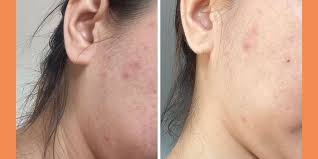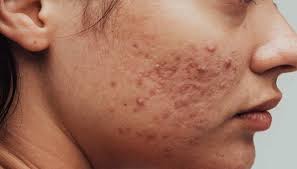Acne is a skin condition that affects millions of people—teens, adults, and even seniors. If you’ve ever struggled with pimples, blackheads, or painful breakouts, you know how frustrating and emotional it can be. Thankfully, modern dermatology offers many effective treatments to help reduce acne and improve the health of your skin.
In this easy-to-understand article, we’ll walk you through the best dermatology treatments for acne-prone skin, how they work, and what to expect. Whether you’re just starting your skincare journey or you’ve tried it all, this guide will help you find a path toward clearer, healthier skin.
Why Acne Happens
Before diving into treatments, it helps to understand what causes acne in the first place. Acne occurs when:
- Your pores get clogged with oil and dead skin cells.
- Bacteria grow in the blocked pores.
- Inflammation develops, leading to pimples, cysts, or nodules.
Hormones, stress, diet, and genetics all play a role in how severe your acne is.
Best Dermatology Treatments for Acne-Prone Skin
Dermatologists use a combination of medications, procedures, and skincare routines to treat acne. The right treatment depends on your skin type, acne severity, and how your skin responds.
Topical Prescription Creams and Gels
These are usually the first step in dermatology treatment. They are applied directly to the skin.
Common ones include:
- Retinoids (like tretinoin or adapalene): unclog pores and prevent new acne.
- Benzoyl Peroxide: kills bacteria and reduces inflammation.
- Antibiotics (like clindamycin): help fight acne-causing bacteria.
- Azelaic Acid: evens out skin tone and reduces redness.
✅ Best for: mild to moderate acne
Visible results: 4–8 weeks
Oral Medications
If your acne is more severe or resistant to creams, your dermatologist might prescribe oral medicine.
Types include:
- Antibiotics: reduce bacteria and inflammation.
- Birth Control Pills (for women): regulate hormones that trigger acne.
- Spironolactone: blocks hormones that cause oil production.
- Isotretinoin (Accutane): a powerful vitamin A derivative used for stubborn, severe acne.
✅ Best for: moderate to severe acne or hormonal acne
Visible results: varies, but long-term improvement is common
Some oral medications come with side effects, so follow your dermatologist’s advice closely.
Chemical Peels
A dermatologist applies a chemical solution to exfoliate the top layer of your skin. This helps:
- Unclog pores
- Fade acne scars
- Improve skin texture
Common peel ingredients include salicylic acid, glycolic acid, or lactic acid.
✅ Best for: acne-prone skin with scarring or uneven texture
🕒 Recovery time: mild redness for a few days
Laser and Light Therapy
These treatments use different types of light to kill acne-causing bacteria and reduce oil production.
- Blue light therapy targets bacteria.
- Red light therapy reduces inflammation.
- Laser resurfacing can improve acne scars over time.
✅ Best for: stubborn acne or post-acne scars
🕒 Sessions needed: 4–8 treatments typically
⚠️ Can be pricey, but often worth it for long-term skin health.
Extraction and Drainage Procedures
If you have painful cystic acne, a dermatologist may manually drain the lesions or inject them with corticosteroids to reduce swelling fast.
✅ Best for: deep, inflamed acne cysts
🕒 Immediate relief, though it doesn’t prevent future breakouts
Microneedling
This procedure uses tiny needles to create micro-injuries in the skin, stimulating collagen production and helping acne scars fade.
✅ Best for: post-acne scarring and uneven texture
🕒 Multiple sessions recommended for best results
Skincare Tips from Dermatologists for Acne-Prone Skin
Even the best treatments won’t work unless you care for your skin daily. Dermatologists recommend the following:
✔️ Use a gentle cleanser
Look for sulfate-free cleansers that don’t strip your skin.
✔️ Moisturize
Even oily skin needs hydration. Use non-comedogenic moisturizers.
✔️ Avoid picking at your face
This spreads bacteria and causes scars.
✔️ Wear sunscreen
When to See a Dermatologist
If:
- Your acne is painful, cystic, or leaves scars
- Over-the-counter treatments haven’t worked
- Your acne affects your confidence
…then it’s time to book an appointment with a certified dermatologist. The sooner you get help, the better your skin can heal.
Final Thoughts
Dealing with acne-prone skin can be overwhelming, but you don’t have to face it alone. With the right dermatology treatments—whether it’s a topical cream, a prescription pill, or a modern laser therapy—clearer skin is possible.
The key is consistency, patience, and professional guidance. Everyone’s skin is different, so don’t lose hope if the first thing you try doesn’t work. Keep working with your dermatologist to find the best solution for your skin.
FAQs About Dermatology Treatments for Acne-Prone Skin
1. Is it safe to use multiple acne treatments at once?
It can be, but only under a dermatologist’s guidance. Some products can irritate or cancel each other out if used together.
2. Do dermatology treatments work for body acne too?
Yes! Acne on the back, chest, or shoulders can be treated with similar medications and procedures.
3. How long does it take to see results?
It depends on the treatment. Most show improvement in 4–8 weeks, but deeper changes (like scar fading) take longer.
4. Can diet affect acne-prone skin?
Yes, some people find that dairy or high-sugar diets trigger breakouts. Talk to your doctor about potential links.
5. Is acne ever truly “cured”?
For many people, acne can be managed and controlled long-term, though it may come and go. Some grow out of it, while others need ongoing care.


